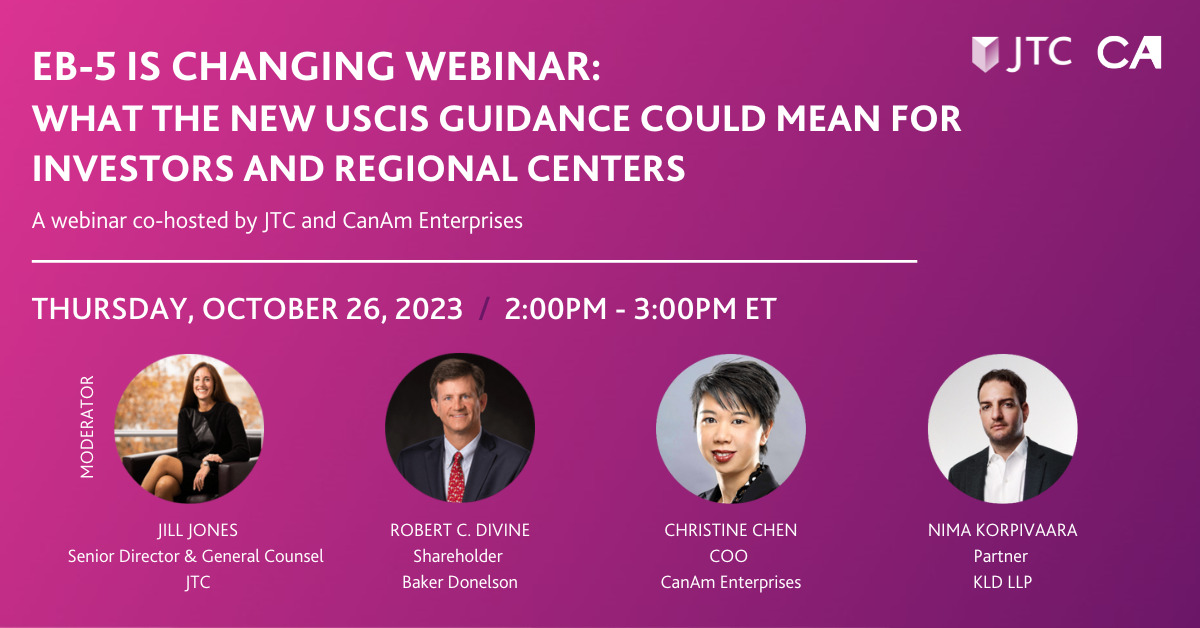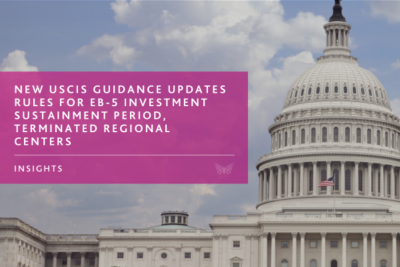Beth Mattson-Teig | Aug 21, 2023
The tightening of real estate capital markets could fuel further activity among immigrant investors.
The EB-5 immigration investment program has been on a bumpy path to recovery after Congress reinstated the program nearly 18 months ago. But industry participants are optimistic about the runway ahead due to pent-up demand from international investors along with developers that are searching for alternative financing sources in a more capital-constrained market.
EB-5 is an incentive program for foreign investment into the U.S. that trades green cards for capital. Its supporters have long touted it as an important economic stimulus tool for economic development and job creation. With a minimum investment amount of $800,000, the program has historically generated billions in funding annually issuing around 10,000 visas per year. According to estimates from the industry trade association, IIUSA, at least $834 million has been generated through the EB-5 program in the first half of fiscal year 2023 alone. This capital is used to finance commercial real estate and infrastructure development.
Congress has been debating program reforms for years, and the inability to come to terms resulted in a failure to renew funding for the program. The sunsetting of the EB-5 regional center program in June 2021 left operators in limbo for several months. The program was eventually reinstated in March 2022 as part of the EB-5 Reform and Integrity Act.
“I would say the program is recovering and gaining momentum, while still being cautious,” said Jill Jones, senior director and general counsel at JTC, a global professional services business. The reinstatement of the program was by no means a flip of the switch back to the “on” position. Although reforms were generally welcomed by the industry, it also produced some speed bumps to reopening the program. “The biggest roadblock we face today is uncertainty. There are so many things that lack clarity on how they should be implemented that people aren’t 100% sure of how to proceed,” Jones said.
Another big speedbump was that the U.S. Citizen and Immigration Services (USCIS), which is in charge of administering the EB-5 program, interpreted the new legislation as requiring the reauthorization of hundreds of existing EB-5 regional centers. The industry pushed back with a lawsuit that was eventually settled in favor of regional centers in September 2022. “Once that settlement happened, it was a race out the door,” said Christine Chen, chief operating officer at CanAm Enterprises, a leading EB-5 regional center operator.
Pent-up demand
Although the reinstatement of the program has run into delays due to the learning curve around new rules, there also are some strong tailwinds that have unleashed tremendous pent-up demand. Notably, the Integrity and Reform Act created new categories with fresh set-asides or allocations of visas for applicants. Those categories include qualifying projects in rural areas, designated high employment areas and infrastructure projects. Effectively, what that means is that individuals that invest into those areas get priority processing of their EB-5 visa applications, noted Ronald Fieldstone, and EB-5 expert and partner at Saul Ewing LLP.
One of the chronic problems with the EB-5 program prior to its brief sunset was that there were caps on the number of visas that could be issued to any one particular country. The overwhelming demand from China in particular created a queue that was running 10 to 15 years, which had frozen new activity. Demand from Chinese nationals has now come roaring back. “There is excitement and a flurry of new activity coming from investors in China who feel that they have a second chance to get into the program,” Jones said.
That also is welcome news for the EB-regional centers that had already built out infrastructure in China with agencies and educational resources in place. China, India, Vietnam and South Korea have traditionally been the big four in terms of demand. EB-5 firms are focused on rebuilding networks and relationships in all of those countries. There also is strong demand coming from Latin America, as well as Russian people who have been dislocated to other countries outside of Russia.
“The U.S. is viewed as a strong passport globally. So, when the program reopened, there were a lot of people sitting and waiting that were ready to move,” Chen said. “And the changes in the program afforded them new opportunities that just weren’t available to them before.”
Another big change that has mobilized the market since the program was reauthorized is the ability to do concurrent filing. If someone is here on a legitimate visa, such as a student or work visa, then they can stay in the U.S. while their EB-5 visa is pending. “This has become a way for people to invest and wait for their eventual EB-5 green card, but in the meantime, they can continue on and build their lives in the U.S.,” added Jones.
Alternative capital source
The return of EB-5 capital is welcome news for developers that are looking for alternative financing sources. Some participants believe the EB-5 program could see a spike in popularity that is reminiscent of the Great Financial Crisis. According to IIUSA, the EB-5 program helped generate $20.6 billion in foreign direct investment between 2008 and 2015. “As we all know, interest rates have gone up and it’s harder to get loans. So, all of a sudden EB-5 has become a much more attractive alternative to developers,” Fieldstone said.
Developers are using EB-5 money to take out a more expensive piece, such as mezzanine debt or preferred equity. The cost of EB-5 capital varies depending on the strategy of the regional center and project risk with a range that runs from 6 percent into the low teens.
In addition, the developer demand coupled with the evolution of EB-5 is giving investors access to more investment opportunities. “For us, it’s a really great time for EB-5 money to be put to work in really high-quality projects,” Chen said. “They’re more a victim of circumstances in the environment we’re in. So, for us, we’re in a really dynamic time for us that has benefits.”
Despite some of the recent turbulence in the program, many participants have a positive outlook for future growth. “Because of the Reform and Integrity Act, the whole industry is maturing and becoming more sophisticated,” Jones added. Some of the bad players have been weeded out, and hopefully, people will recognize that this is a government program that is meant to do good by creating and developing underserved areas, she adds. The Reform and Integrity Act extended the EB-5 regional center program through Sept. 30, 2027.
CanAm Enterprises, with over three decades of experience promoting immigration-linked investments in the US and Canada, has a demonstrated track record of success. With over 60 financed projects and $3 billion in raised EB-5 investments, CanAm has earned a reputation for credibility and trust. To date, CanAm has repaid more than $2.26 billion in EB-5 capital from over 4,530 families. CanAm manages several USCIS-designated regional centers that stretch across multiple states. For more information, please visit www.canamenterprises.com.






